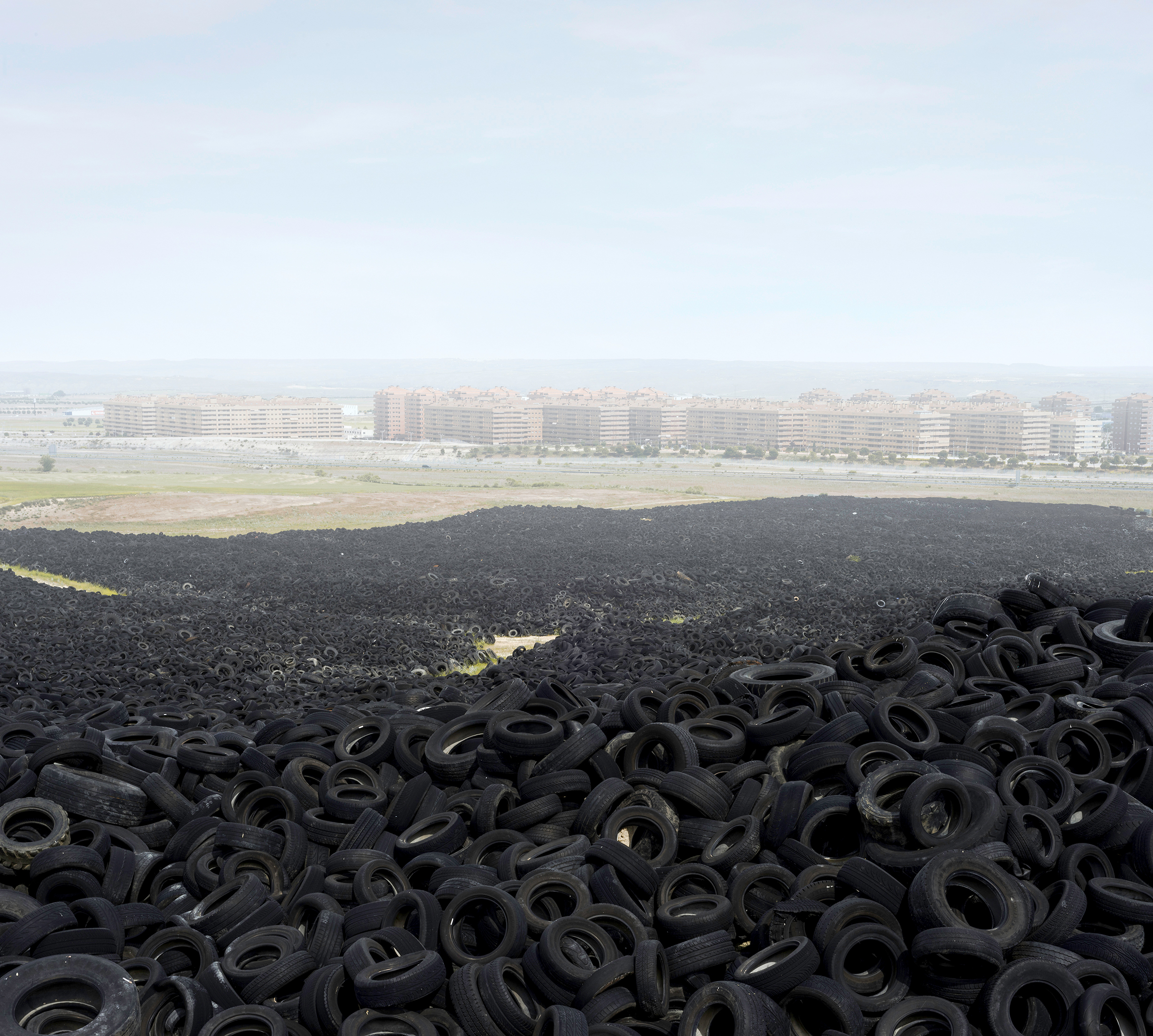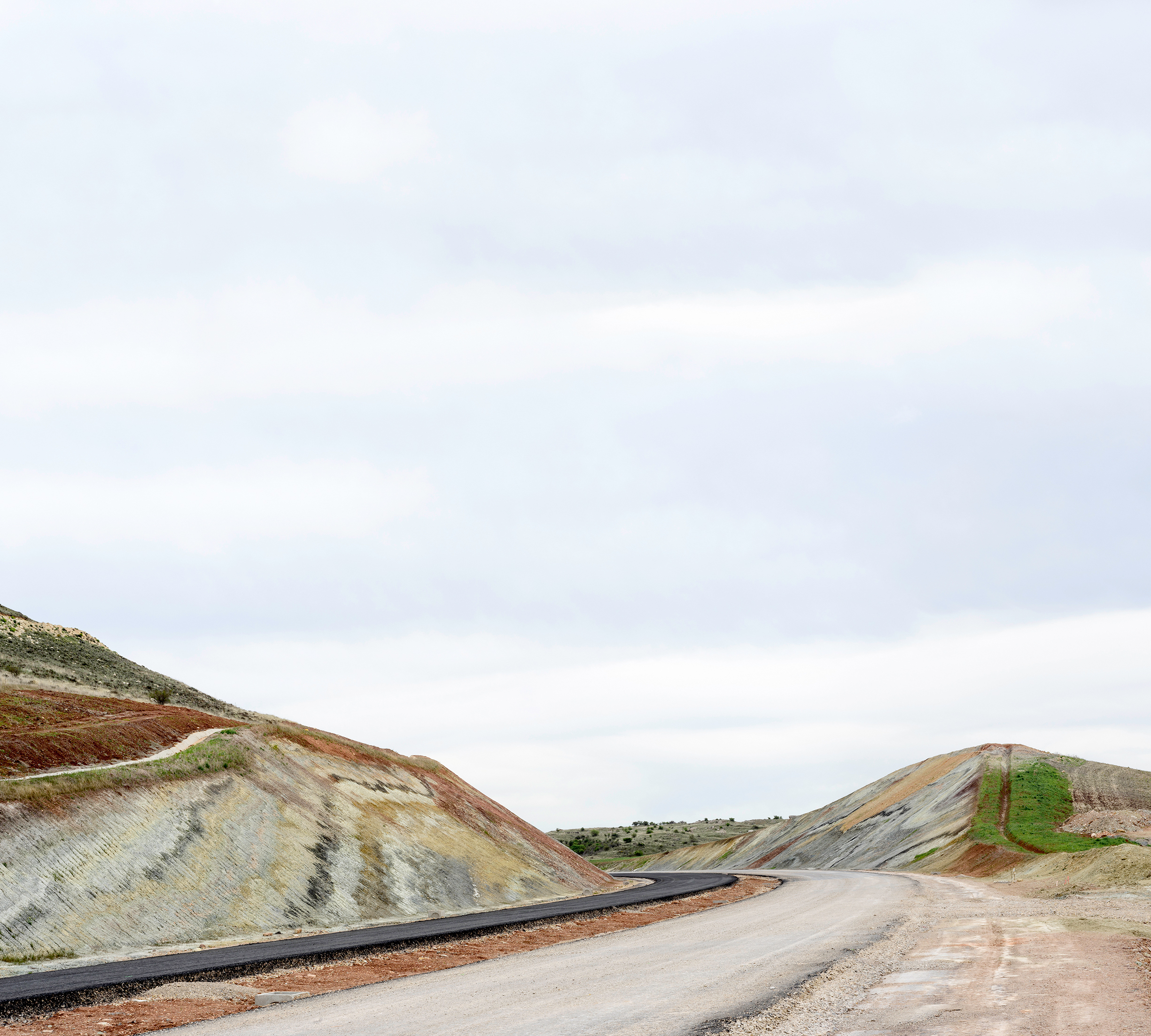Non finito [2014]
Série de 10 photographies réalisée en France et dans le nord de l'Espagne.
Tirages pigmentaires, Epson Hot Press Bright White paper 300g - 133 x 120 cm - Dibond 2mm / Caisse américaine.
Series of 10 photographs made in France and northern Spain.
Pigment prints, Epson Hot Press Bright White paper 300g - 133 x 120 cm - Dibond 2mm / framing american box.
TEXTE FRANÇAIS
À l’origine des deux séries, Non Finito et Empire of Dust, se trouve l’impact de la crise financière de 2008 et la quête d’images et de lieux capables d’exprimer l’effondrement d’un système, le capitalisme, dont on a pu constater les effets à la Nouvelle-Orléans, à Détroit, à Athènes ou encore en Espagne.
Pour la première série sur les constructions inachevées, Non Finito, Amélie Labourdette a choisi l’Espagne, pays touché par l’effondrement de la bulle immobilière. Cette série photographique imagine une “archéologie du présent“ affectée par des bouleversements idéologiques, politiques et économiques. Elle y explore la notion d’inachèvement, de “non finito“ initiée par Michel-Ange, comme potentiel d’un “devenir-autre“. Entre documentaire et fiction, ce projet révèle des paysages marqués par des constructions inachevées, des squelettes de béton flottant dans un état d’entre-deux, indéfini.
En s’interrogeant sur le glissement possible de l’identité des formes et de leurs perceptions à travers la photographie, Amélie Labourdette s’est intéressée à la notion de non finito. Cette réflexion a donné naissance à la série éponyme réalisée en Espagne, puis à Empire of Dust dans le sud de l’Italie. Le concept de non finito, littéralement “non terminé“ et interprété artistiquement comme “esthétique de l’inachevé“, désigne des sculptures inachevées par l’artiste, volontairement ou non. L’inachèvement présente l’œuvre sous une forme interrompue, comme une étape du processus de création et condition d’une “œuvre ouverte“, des “œuvres à venir“. Cette esthétique est intrinsèquement liée aux définitions de la modernité, qui valorisent la perception du spectateur dans la construction de l’œuvre : « c’est le regard du spectateur qui fait l’œuvre ».
À travers cette série photographique, en initiant une conversion du regard du spectateur, Amélie Labourdette interroge le glissement possible de l’identité de ces formes singulières, leur conférant une dimension surréelle et les faisant accéder à une dimension plastique, un devenir sculpture. Ce travail photographique réside dans le passage d’un registre à l’autre au sein d’une même image, dans l’équilibre entre image “document“ et image “fiction“, où différentes réalités possibles coexistent.
ENGLISH TEXT
The two series, Non Finito and Empire of Dust, were inspired by the impact of the 2008 financial crisis and the search for images and places capable of expressing the collapse of a system - capitalism - whose effects can be seen in New Orleans, Detroit, Athens and Spain.
For her first series on unfinished constructions, Non Finito, Amélie Labourdette chose Spain, a country hit by the collapse of the real estate bubble. This photographic series imagines an "archaeology of the present" affected by ideological, political and economic upheavals. It explores the notion of incompleteness, of the "non finito" initiated by Michelangelo, as potential for a "becoming-other". Somewhere between documentary and fiction, this project reveals landscapes marked by unfinished constructions, concrete skeletons floating in a state of undefined in-betweenness.
Looking at the possible shift in the identity of forms and their perceptions through photography, Amélie Labourdette became interested in the notion of non finito. This reflection gave rise to the eponymous series produced in Spain, followed by Empire of Dust in southern Italy. The concept of non finito, literally " not finished " and artistically interpreted as " aesthetics of the unfinished ", refers to sculptures left unfinished by the artist, whether voluntarily or not. Incompletion presents the work in an interrupted form, as a stage in the creative process and a condition for an "open work", for "works to come". This aesthetic is intrinsically linked to the definitions of modernity, which value the viewer's perception in the construction of the work: "it is the viewer's gaze that makes the work".
Through this photographic series, by initiating a conversion of the viewer's gaze, Amélie Labourdette questions the possible shift of identity of these singular forms, conferring on them a surreal dimension and giving them access to a plastic dimension, a becoming sculpture. This photographic work lies in the passage from one register to another within the same image, in the balance between "document" and "fiction" images, where different possible realities coexist.









